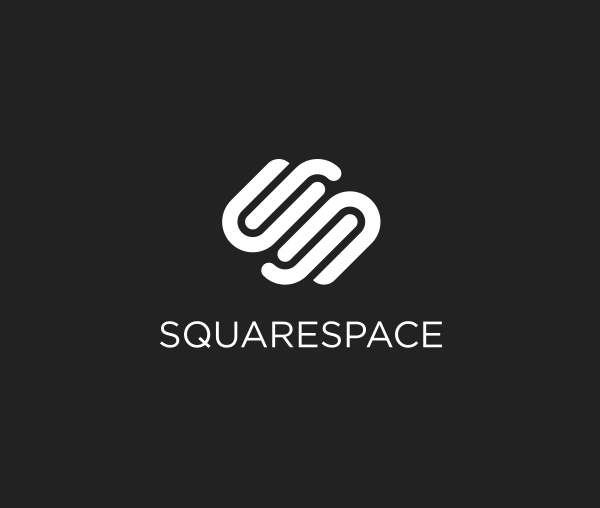After two months of using the EM-1 Mark II including a weeklong trip in subzero temps in Alaska - I share my thoughts on this top of the line Micro 4/3rds camera - How well does it do at high ISOs, how good is the stabilization and more...https://youtu.be/SdKpor-nvDs Reviews like this are made possible by Photorec.tv members - want to have a detailed conversation with me about the pros and cons of the EM1 Mark II or another camera, want to figure out what is the best camera for you? Become a member todayBuy the Olympus EM1 Mark II from B&H Photo and support Photorec.tvLenses Used in Alaska/During Em1 Mark II Review
The Olympus 12-100 f/4 Provides 6.5 stops of IS when used with the EM1 Mark II
Full Resolution Images on DropBox
[gallery columns="4" td_select_gallery_slide="slide" ids="13425,13426,13427,13428,13429,13430,13431,13432"]The Olympus e-m1 Mark II camera some reviewers have chosen it as the camera of 2016 and a few weeks ago I wondered if it was going to be my perfect do-it-all camera! For the last month, almost 2 months now, I have used the Olympus as a do-it-all camera for photos and videos including a week long trip to Alaska in sub-freezing temperatures. In this review I will share what I love about this camera, what I don’t love, how it compares to a few competitors and whether or not it can work for me and replace two cameras I typically take on my travels - my Sony A7RII mostly for photos and the Panasonic GH4 - mostly used for video, vlogging and timelapses.Strengths of the Em1 Mark IIStabilization - I can get 2 to 3 second exposures HANDHELD with this camera and in 4K video that sensor stabilization plus electronic stabilization translates to extremely smooth footage. This camera is a joy to shoot handheld video with and in all the Alaska footage I shot I saw no signs of the annoying wobble you often get from electronic stabilization. Note that THE really serious stabilization, 6.5 stops, SYNC IS as Olympus calls it is achieved with their 12-100 f/4 lens which I have not tried.Swiss Army Tool
"best tool I can compare the EM1 Mark II to is one of those ridiculous Swiss army knifes, the really thick ones"
I have mentioned In the past that these cameras are tools to me and the best tool I can compare the EM1 Mark II to is one of those ridiculous Swiss army knifes, the really thick ones, the amount of features beyond the stabilization they have packed into this camera include ridiculously fast AF, 60 frames per second RAW when you half press the shutter button, 18 frames per second with autofocus tracking and silent shooting, hi res shooting, live bulb, live timer, live composite, 4k video, and built in time lapse! All of these features makes the EM1 Mark II an extremely flexible and versatile tool. And on top of the full feature set you have the freedom to FULLY customize this camera - you can even switch the on/off button to other functions! You will find yourself spending a good bit of time in the menu if you haven’t shot with Olympus more and I did experience several camera freeze ups after customizing until I reset the camera and went a little lighter on the customization.About that AF - I struggled to really get the C-AF and tracking to nail fast moving subjects - overall focus is VERY fast but this wouldn't be my first choice if I was primarily shooting wildlife or sports. In video C-AF was very good with face recognition/focus working reliably enough to use in most situations. Certainly a step up from the GH4 which cannot always be relied on to stay focused. Rugged BodyAll of this performance and features are contained in a portable and rugged body that I didn’t worry about using in the rain or in subzero temps - in fact I left this outside for several hours in 20 below zero fahrenheit - minus the battery and it continued to perform just fine. Battery life in normal temperatures is decent - if you have two batteries you should be able to get through a day of mixed photo and video just fine and the charger is quick charge which is really helpful. The dual card slots are nice and you have an excellent amount of flexibility in how you use those two cards - backup redundancy or photos to one and video to the other though only one is high speed and that might be the cause of some buffer issues I saw that I will address in a moment.Solid Image and Video Quality Below ISO 1600
Rugged BodyAll of this performance and features are contained in a portable and rugged body that I didn’t worry about using in the rain or in subzero temps - in fact I left this outside for several hours in 20 below zero fahrenheit - minus the battery and it continued to perform just fine. Battery life in normal temperatures is decent - if you have two batteries you should be able to get through a day of mixed photo and video just fine and the charger is quick charge which is really helpful. The dual card slots are nice and you have an excellent amount of flexibility in how you use those two cards - backup redundancy or photos to one and video to the other though only one is high speed and that might be the cause of some buffer issues I saw that I will address in a moment.Solid Image and Video Quality Below ISO 1600
 I was for the most part happy with the image and video quality - Excellent quality and great detail under ISO 1600 - above that things can get rough in some situations but a little noise reduction and I am still for the most part happy. If I look at some of my favorite images of 2016 - the vast majority were under ISO 1600 - which I mostly mention as a way for you to look back over your images to decide how important clean higher ISO is to your photography. One of the goals of the Alaska trip was capturing the northern lights photography and they are best shot at shorter exposures and higher ISOs and the Olympus didn’t handle that as well as the Sony with loads more shadow noise. I got useable shots but really appreciate the flexibility of the Sony when I need clean higher ISOs. Video quality is certainly good though the panasonic GH4 4k and 1080 video looks a little better to me in most situations but of course the Gh4 is not sensor stabilized for that we are waiting for the GH5 or as many of you mentioned in the comments of the Ditching Sony video - the G85 which at 1/2 the price looks as good if not slightly better for video. For photos the G85 doesn’t offer all the bells and whistles - certainly not as good at capturing fast action but generally on par and actually offers more lenses than Olympus with the DUAL IS! So a quick summary of the strengths of the olympus. This is a great all around camera that is fun to use, provides nicely stabilized video AND gives you a ton of bells and whistles along with good image and video quality but it does have a few issues- Low light performance. Over the last year I have mostly shot with the Sony a7R2 this is a full frame sensor and one of the best in its class in both resolution and detail so it is hard for ME to NOT compare what I have been used to seeing with what I get out of the Olympus but that isn’t a fair comparison so I looked at matching it up against APS-C sized sensor like the Sony a6300, a6500 the Nikon D500 and the Fuji XT2 - all of those cameras are definitely better in low light performance but the Olympus isn’t too far behind and it even beats the Canon 80D! Now again, the EM1 Mark II offers stabilization that gives you some flexibility with shooting slower shutter speed but vs everything above you are going to generaly find your photos noisier. The most fair comparison- pitting the EM1 Mark II against other Micro 4/3rd sensors on the market - it is the current king in low light performance. However figuring out the true value here is tricky - at two thousand dollars this is not a cheap camera and is more expensive than everything I just compared it too - So you then have to start deciding exactly how much it is worth to you to go smaller and lighter. And - About being lighter - as I start to price out lenses what I mentioned is already an expensive camera well it doesn’t get any cheaper with these nice lenses AND the weight savings start to vanish- though your bag can be smaller or you could choose to go with cheaper and smaller primes which is fun - but if you want the best lenses you will still be carrying a fair amount of weight and paying top dollar.Remember I am not only reviewing this camera but trying to figure out if it can work for my needs so I can carry less and I had major concerns about the Wifi control turns out you have enough control even if you have to be round about how you setup AF for video BUT there is still one issue for me- While using the remote you cannot shoot 4K video, only 1080P - I shoot in 4K, I plan to shoot in 4k in the future so why Olympus do you give me a 4k capable camera that suddenly becomes a 1080P camera if I want to use the remote? In researching this and complaining about it online someone pointed out that the Fuji XT-2 limits you to 720P when using wifi. SO Just a thank you to Panasonic for giving a 4K camera, the GH4, that always remains a 4K camera AND you don’t have to be round about to do auto focus with the app. Another small disappointment when you shoot a crazy burst you don’t get to review any of those images until they all finish writing to the sensor which can take some time with the larger bursts. SO in final summary - I really enjoyed using this camera, if you are looking for a top of the line Micro 4/3 camera well suited for wildlife photography, general travel photography including vlogging style video - this is the best you can BUY... BUT at its current cost there are some competitors that while they might not offer all the bells and whistles or all of the portability they do either outclass it in low light performance or resolution or both. And while I would love to simplify to one camera, one lens system I am just not willing to make this big a change in resolution or low light performance, especially when my GH4 still looks better for video even if it isn’t as stabilized. I will be looking at the Panasonic G85 and while I hope to review the Fuji XT-2 soon it isn’t in the running as a replacement despite many of you recommending it - the 720p during wifi remote use, the 10 minutes limit to 4k without the power grip AND the lack of fully articulating screen means it cannot be a do it all camera for me. Buy the Olympus EM1 Mark II from B&H Photo and support Photorec.tvLenses Used in Alaska/During Em1 Mark II Review
I was for the most part happy with the image and video quality - Excellent quality and great detail under ISO 1600 - above that things can get rough in some situations but a little noise reduction and I am still for the most part happy. If I look at some of my favorite images of 2016 - the vast majority were under ISO 1600 - which I mostly mention as a way for you to look back over your images to decide how important clean higher ISO is to your photography. One of the goals of the Alaska trip was capturing the northern lights photography and they are best shot at shorter exposures and higher ISOs and the Olympus didn’t handle that as well as the Sony with loads more shadow noise. I got useable shots but really appreciate the flexibility of the Sony when I need clean higher ISOs. Video quality is certainly good though the panasonic GH4 4k and 1080 video looks a little better to me in most situations but of course the Gh4 is not sensor stabilized for that we are waiting for the GH5 or as many of you mentioned in the comments of the Ditching Sony video - the G85 which at 1/2 the price looks as good if not slightly better for video. For photos the G85 doesn’t offer all the bells and whistles - certainly not as good at capturing fast action but generally on par and actually offers more lenses than Olympus with the DUAL IS! So a quick summary of the strengths of the olympus. This is a great all around camera that is fun to use, provides nicely stabilized video AND gives you a ton of bells and whistles along with good image and video quality but it does have a few issues- Low light performance. Over the last year I have mostly shot with the Sony a7R2 this is a full frame sensor and one of the best in its class in both resolution and detail so it is hard for ME to NOT compare what I have been used to seeing with what I get out of the Olympus but that isn’t a fair comparison so I looked at matching it up against APS-C sized sensor like the Sony a6300, a6500 the Nikon D500 and the Fuji XT2 - all of those cameras are definitely better in low light performance but the Olympus isn’t too far behind and it even beats the Canon 80D! Now again, the EM1 Mark II offers stabilization that gives you some flexibility with shooting slower shutter speed but vs everything above you are going to generaly find your photos noisier. The most fair comparison- pitting the EM1 Mark II against other Micro 4/3rd sensors on the market - it is the current king in low light performance. However figuring out the true value here is tricky - at two thousand dollars this is not a cheap camera and is more expensive than everything I just compared it too - So you then have to start deciding exactly how much it is worth to you to go smaller and lighter. And - About being lighter - as I start to price out lenses what I mentioned is already an expensive camera well it doesn’t get any cheaper with these nice lenses AND the weight savings start to vanish- though your bag can be smaller or you could choose to go with cheaper and smaller primes which is fun - but if you want the best lenses you will still be carrying a fair amount of weight and paying top dollar.Remember I am not only reviewing this camera but trying to figure out if it can work for my needs so I can carry less and I had major concerns about the Wifi control turns out you have enough control even if you have to be round about how you setup AF for video BUT there is still one issue for me- While using the remote you cannot shoot 4K video, only 1080P - I shoot in 4K, I plan to shoot in 4k in the future so why Olympus do you give me a 4k capable camera that suddenly becomes a 1080P camera if I want to use the remote? In researching this and complaining about it online someone pointed out that the Fuji XT-2 limits you to 720P when using wifi. SO Just a thank you to Panasonic for giving a 4K camera, the GH4, that always remains a 4K camera AND you don’t have to be round about to do auto focus with the app. Another small disappointment when you shoot a crazy burst you don’t get to review any of those images until they all finish writing to the sensor which can take some time with the larger bursts. SO in final summary - I really enjoyed using this camera, if you are looking for a top of the line Micro 4/3 camera well suited for wildlife photography, general travel photography including vlogging style video - this is the best you can BUY... BUT at its current cost there are some competitors that while they might not offer all the bells and whistles or all of the portability they do either outclass it in low light performance or resolution or both. And while I would love to simplify to one camera, one lens system I am just not willing to make this big a change in resolution or low light performance, especially when my GH4 still looks better for video even if it isn’t as stabilized. I will be looking at the Panasonic G85 and while I hope to review the Fuji XT-2 soon it isn’t in the running as a replacement despite many of you recommending it - the 720p during wifi remote use, the 10 minutes limit to 4k without the power grip AND the lack of fully articulating screen means it cannot be a do it all camera for me. Buy the Olympus EM1 Mark II from B&H Photo and support Photorec.tvLenses Used in Alaska/During Em1 Mark II Review
Reviews like this are made possible by Photorec.tv members - want to have a detailed conversation with me about the pros and cons of the EM1 Mark II or another camera, want to figure out what is the best camera for you? Become a member today














 You trade off some features for the smaller size of the Spark. While the Mavic is capable of 24 minutes flight time, closer to 30 with the new Platinum. The Spark offers just 16 minutes in ideal conditions and in flying both of these - I am almost always done with getting the shots I need with the Mavic and have plenty of battery left. With the Spark, it feels fairly urgent to get the shots I need in that shorter timeframe. The Mavic is faster and while you can switch the Spark into sports mode I have struggled to get very cinematic looking shots when it that mode, the Mavic in normal mode is fast enough and remains smoothly controllable. You also sacrifice range - the Mavic can be flown nearly 4 miles away, the Spark just over a mile when using the controllers for each- honestly here in the United States, you need to keep them both in sight at all times so the difference doesn’t bother me much. And it’s important to mention that the spark at $500 does not come with a controller - you control with the DJI app on your phone - that range is much more limited, just 100 meters and while the Mavic is capable of this too it’s really not something I recommend. The lack of tactile feedback and trying to keep your eyes on the drone plus the screen that your fingers are partially obscuring just make it awkward.
You trade off some features for the smaller size of the Spark. While the Mavic is capable of 24 minutes flight time, closer to 30 with the new Platinum. The Spark offers just 16 minutes in ideal conditions and in flying both of these - I am almost always done with getting the shots I need with the Mavic and have plenty of battery left. With the Spark, it feels fairly urgent to get the shots I need in that shorter timeframe. The Mavic is faster and while you can switch the Spark into sports mode I have struggled to get very cinematic looking shots when it that mode, the Mavic in normal mode is fast enough and remains smoothly controllable. You also sacrifice range - the Mavic can be flown nearly 4 miles away, the Spark just over a mile when using the controllers for each- honestly here in the United States, you need to keep them both in sight at all times so the difference doesn’t bother me much. And it’s important to mention that the spark at $500 does not come with a controller - you control with the DJI app on your phone - that range is much more limited, just 100 meters and while the Mavic is capable of this too it’s really not something I recommend. The lack of tactile feedback and trying to keep your eyes on the drone plus the screen that your fingers are partially obscuring just make it awkward. Difference in the external controllers too with the Mavic providing an LCD screen with some basic info (though everything important is also displayed through the app so you don’t really miss out on info but I find it nice to have my altitude and distance in a dedicated spot), you also have a 5 way configurable stick that is replaced by a simple button on the Spark controller and a few additional customizable buttons on the Mavic controller.
Difference in the external controllers too with the Mavic providing an LCD screen with some basic info (though everything important is also displayed through the app so you don’t really miss out on info but I find it nice to have my altitude and distance in a dedicated spot), you also have a 5 way configurable stick that is replaced by a simple button on the Spark controller and a few additional customizable buttons on the Mavic controller. But of course the Spark can be flown without any controller at all via gesture mode and not something available on the Mavic - it feels a bit gimmicky and at times I struggled to get it to do much other than take off and land on my palm but when it works it is fun to use and certainly impresses your friends.
But of course the Spark can be flown without any controller at all via gesture mode and not something available on the Mavic - it feels a bit gimmicky and at times I struggled to get it to do much other than take off and land on my palm but when it works it is fun to use and certainly impresses your friends. Both cameras share the same sensor though the mavic is capable of shooting RAW stills that gives you more editing capabilities, offers a slightly wider fixed aperture f/2.2 vs f/2.6 in the spark and, shooting 4k video with 3 axis gimbal support vs just 1080 and 2 axis gimbal in the Spark at a lower bit rate. I my testing I certainly see an advantage with the Mavic in stills and video quality, especially in lower light. The spark isn’t bad - it just feels a touch behind what the Mavic provides in quality. I haven’t really noticed a difference between the 2 axis and 3 axis gimbals - the spark video looks just as stable smooth.
Both cameras share the same sensor though the mavic is capable of shooting RAW stills that gives you more editing capabilities, offers a slightly wider fixed aperture f/2.2 vs f/2.6 in the spark and, shooting 4k video with 3 axis gimbal support vs just 1080 and 2 axis gimbal in the Spark at a lower bit rate. I my testing I certainly see an advantage with the Mavic in stills and video quality, especially in lower light. The spark isn’t bad - it just feels a touch behind what the Mavic provides in quality. I haven’t really noticed a difference between the 2 axis and 3 axis gimbals - the spark video looks just as stable smooth. You do see a noticeable difference in control options for both photos and video in the app - Not only does the Mavic provide the RAW shooting you have color profiles for video and you can customize the speed of the gimbal for very controlled, cinematic looking shots - not possible on the Spark.
You do see a noticeable difference in control options for both photos and video in the app - Not only does the Mavic provide the RAW shooting you have color profiles for video and you can customize the speed of the gimbal for very controlled, cinematic looking shots - not possible on the Spark. The Spark is cheaper, lighter, smaller and in some ways more fun to fly but does not provide 4k and its image quality/video quality is decent but not quite as good as the Mavic.The Mavic costs more but offers image and video quality that I love using in my travel videos along with the extended flight time and faster speed while remaining cinematic and still being portable enough to bring along just about everywhere.I think the Spark makes a great first drone but the Mavic has those additional advantages that make it worthwhile for the serious content creators that need to travel.I recommend the Fly More Combo for both drones - the extra batteries are useful and having the multi-charger for both drones makes a big difference in how quickly you can get flying again. I recommend buying from B&H Photo - no sales tax outside of NY state.
The Spark is cheaper, lighter, smaller and in some ways more fun to fly but does not provide 4k and its image quality/video quality is decent but not quite as good as the Mavic.The Mavic costs more but offers image and video quality that I love using in my travel videos along with the extended flight time and faster speed while remaining cinematic and still being portable enough to bring along just about everywhere.I think the Spark makes a great first drone but the Mavic has those additional advantages that make it worthwhile for the serious content creators that need to travel.I recommend the Fly More Combo for both drones - the extra batteries are useful and having the multi-charger for both drones makes a big difference in how quickly you can get flying again. I recommend buying from B&H Photo - no sales tax outside of NY state.



 Shop all the DJI Spark colors at B&H Photo
Shop all the DJI Spark colors at B&H Photo Buy the Panasonic G85
Buy the Panasonic G85 

 Buy the Canon 80D
Buy the Canon 80D
 I want to at least briefly match this up against the canon 80D priced similarly. I think the 80D is for many people a default choice when they want a video capable camera especially a high quality vlogging setup - the flip out touch screen, the lovely dual pixel AF that makes focus smooth and capable of accurate tracking. The 80D is also a very solid still camera. Let’s look at how these two compareSensor - The 80D offers a larger aps-c sensor with 24mp vs the micro 4/3rds 16MP on the G85 and this of course translates to a fairly noticeable resolution difference but not as much of a low light noise difference as you might expect. And the G85 is helped by the absence of an AA filter - providing nicely detailed images. I will give the win to the 80D but it is very close. For stills I found AF to be very similar between both - the G85 in Af-s is fast though I would rather the 80D in my hands for any more serious wildlife photos, especially tracking action or birds in flight.
I want to at least briefly match this up against the canon 80D priced similarly. I think the 80D is for many people a default choice when they want a video capable camera especially a high quality vlogging setup - the flip out touch screen, the lovely dual pixel AF that makes focus smooth and capable of accurate tracking. The 80D is also a very solid still camera. Let’s look at how these two compareSensor - The 80D offers a larger aps-c sensor with 24mp vs the micro 4/3rds 16MP on the G85 and this of course translates to a fairly noticeable resolution difference but not as much of a low light noise difference as you might expect. And the G85 is helped by the absence of an AA filter - providing nicely detailed images. I will give the win to the 80D but it is very close. For stills I found AF to be very similar between both - the G85 in Af-s is fast though I would rather the 80D in my hands for any more serious wildlife photos, especially tracking action or birds in flight.















 All the individual shots were placed in Final Cut Pro - :04 seconds in a 30fps video. Notice the shorter exposure shots capture a bit more of the detail but the difference isn't huge between a 4 and 30 second exposure!
All the individual shots were placed in Final Cut Pro - :04 seconds in a 30fps video. Notice the shorter exposure shots capture a bit more of the detail but the difference isn't huge between a 4 and 30 second exposure!



